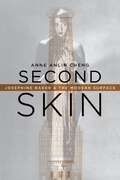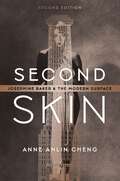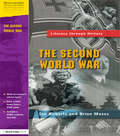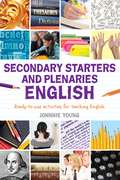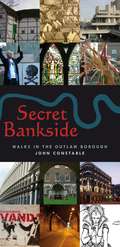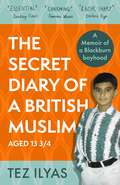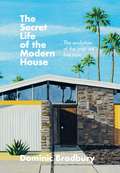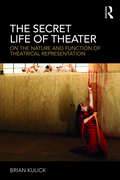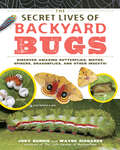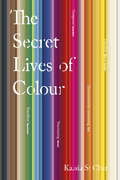- Table View
- List View
Second Skin: Josephine Baker & the Modern Surface
by Anne Anlin ChengThrough the figure of Josephine Baker, Second Skin tells the story of an unexpected yet enduring intimacy between the invention of a modernist style and the theatricalization of black skin at the turn of the twentieth century. Stepping outside of the platitudes surrounding this iconic figure, Anne A. Cheng argues that Baker's famous nakedness must be understood within larger philosophic and aesthetic debates about, and desire for, 'pure surface' that crystallized at the convergence of modern art, architecture, machinery, and philosophy. Through Cheng's analysis, Baker emerges as a central artist whose work engages with and impacts various modes of modernist display such as film, photography, art, and even the modern house.
Second Skin: Josephine Baker & the Modern Surface
by Anne Anlin ChengThrough the figure of Josephine Baker, Second Skin tells the story of an unexpected yet enduring intimacy between the invention of a modernist style and the theatricalization of black skin at the turn of the twentieth century. Stepping outside of the platitudes surrounding this iconic figure, Anne A. Cheng argues that Baker's famous nakedness must be understood within larger philosophic and aesthetic debates about, and desire for, 'pure surface' that crystallized at the convergence of modern art, architecture, machinery, and philosophy. Through Cheng's analysis, Baker emerges as a central artist whose work engages with and impacts various modes of modernist display such as film, photography, art, and even the modern house.
Second Skin: Josephine Baker and the Modern Surface
by Anne Anlin ChengThrough the figure of Josephine Baker, Second Skin tells the story of an unexpected yet enduring intimacy between the invention of a modernist style and the theatricalization of black skin at the turn of the twentieth century. Stepping outside of the platitudes surrounding this iconic figure, Anne A. Cheng argues that Baker's famous nakedness must be understood within larger philosophic and aesthetic debates about, and desire for, 'pure surface' that crystallized at the convergence of modern art, architecture, machinery, and philosophy. Through Cheng's analysis, Baker emerges as a central artist whose work engages with and impacts various modes of modernist display such as film, photography, art, and even the modern house.
Second Skin: Josephine Baker and the Modern Surface
by Anne Anlin ChengThrough the figure of Josephine Baker, Second Skin tells the story of an unexpected yet enduring intimacy between the invention of a modernist style and the theatricalization of black skin at the turn of the twentieth century. Stepping outside of the platitudes surrounding this iconic figure, Anne A. Cheng argues that Baker's famous nakedness must be understood within larger philosophic and aesthetic debates about, and desire for, 'pure surface' that crystallized at the convergence of modern art, architecture, machinery, and philosophy. Through Cheng's analysis, Baker emerges as a central artist whose work engages with and impacts various modes of modernist display such as film, photography, art, and even the modern house.
Second World Postmodernisms: Architecture and Society under Late Socialism
by Vladimir KulicIf postmodernism is indeed “the cultural logic of late capitalism,” why did typical postmodernist themes like ornament, color, history and identity find their application in the architecture of the communist-socialist Second World? How do we explain the retreat into paper architecture and theoretical discussion in societies still nominally devoted to socialist modernisation?Exploring the intersection of two areas of growing scholarly interest-postmodernism and the architecture of the socialist and former-communist world-this edited collection stakes out new ground as the first work to chart the various transformations of second world architecture in the 1970s and 80s. Sixteen essays together explore the question of whether or not architectural postmodernism had a specific second world variant. The collection ultimately aims to demonstrate both the unique nature of second world architectural phenomena, and also to assess connections with western postmodernism. The work comprises sixteen truly diverse case studies, covering not only the vast geographical scope of the former socialist world, but also a wealth of aesthetic, discursive and practical phenomena, interpreting architecture in the broader socio-political context of the last decades of the Cold War. The result should provide a greatly expanded map of recent architectural history, which redefines postmodernist architecture in a more theoretically comprehensive and global way.
Second World Postmodernisms: Architecture and Society under Late Socialism
by Vladimir KulicIf postmodernism is indeed “the cultural logic of late capitalism,” why did typical postmodernist themes like ornament, color, history and identity find their application in the architecture of the communist-socialist Second World? How do we explain the retreat into paper architecture and theoretical discussion in societies still nominally devoted to socialist modernisation?Exploring the intersection of two areas of growing scholarly interest-postmodernism and the architecture of the socialist and former-communist world-this edited collection stakes out new ground as the first work to chart the various transformations of second world architecture in the 1970s and 80s. Sixteen essays together explore the question of whether or not architectural postmodernism had a specific second world variant. The collection ultimately aims to demonstrate both the unique nature of second world architectural phenomena, and also to assess connections with western postmodernism. The work comprises sixteen truly diverse case studies, covering not only the vast geographical scope of the former socialist world, but also a wealth of aesthetic, discursive and practical phenomena, interpreting architecture in the broader socio-political context of the last decades of the Cold War. The result should provide a greatly expanded map of recent architectural history, which redefines postmodernist architecture in a more theoretically comprehensive and global way.
The Second World War
by Ian Roberts Brian MosesThis book will support children as they: * Find out about wartime phrases and use them to write a dialogue * Write a letter home from a P.O.W. camp * Read wartime adverts and slogans and decide how effective they are
The Second World War: The Second World War
by Ian Roberts Brian MosesThis book will support children as they: * Find out about wartime phrases and use them to write a dialogue * Write a letter home from a P.O.W. camp * Read wartime adverts and slogans and decide how effective they are
Secondary Starters and Plenaries: Creative activities, ready-to-use for teaching English (Classroom Starters and Plenaries)
by Johnnie YoungThis book provides English teachers with 50 cohesive suggestions for embedding and extending learning in the classroom: from individual to whole-class activities, and from the energetic to the sedate, all with realistic timings for each. Even better, every starter and plenary contains an 'ideas generator', making it easily-adaptable for the whole ability range of your class and keeping it fresh for you to use, and there are PowerPoints, task sheets and other time-saving resources online. The book covers the whole spectrum of topics that every English teacher needs to cover, and makes use of music, drama, maps, charts and practical props. Some ideas involve students managing and monitoring each other; some use all the senses; others involve creative thinking and where practical and appropriate, the content is embedded in the real world so that students can immediately see the wider application of their efforts. The 'teacher tips' section offers guidance on how to deliver the idea to get the best results based on years of trial and error by the author.
Secondary Starters and Plenaries: Creative activities, ready-to-use for teaching English (Classroom Starters and Plenaries)
by Johnnie YoungThis book provides English teachers with 50 cohesive suggestions for embedding and extending learning in the classroom: from individual to whole-class activities, and from the energetic to the sedate, all with realistic timings for each. Even better, every starter and plenary contains an 'ideas generator', making it easily-adaptable for the whole ability range of your class and keeping it fresh for you to use, and there are PowerPoints, task sheets and other time-saving resources online. The book covers the whole spectrum of topics that every English teacher needs to cover, and makes use of music, drama, maps, charts and practical props. Some ideas involve students managing and monitoring each other; some use all the senses; others involve creative thinking and where practical and appropriate, the content is embedded in the real world so that students can immediately see the wider application of their efforts. The 'teacher tips' section offers guidance on how to deliver the idea to get the best results based on years of trial and error by the author.
Secrecy in Japanese Arts: “Secret Transmission” as a Mode of Knowledge
by M. MorinagaExploring the Japanese tradition of hidden (or the secret transmission of) knowledge within a closed and often hereditary group, the author investigates how esoteric practices function, how people make meaning of their practices, and how this form of esotericism survived into the modern age. These questions are examined through the use of esoteric texts from the 15th to 18th centuries and theatrical treatises from the late 19th century onwards.
The Secret Agent (Oberon Modern Plays)
by Joseph Conrad Matthew Hurt Theatre OSecret terror cells, political conspiracy, police bungling, state-sponsored bomb plots… This is London, 1896. Inspired by Joseph Conrad's classic novel, The Secret Agent is theatre O's heartbreaking and hilarious chronicle of passion, betrayal and terrorism. Set at a time of social upheaval and growing disparity between rich and poor, at the heart of this tale is a woman fighting to protect her young brother from exploitationand violence. In their trademark highly imaginative style, described by The New York Times as, "vivid, enlightening, inventive and compelling", music halland early cinema collide in theatre O's return to the stage after five years away.
Secret Bankside: Walks South of the River
by John ConstableOn the south bank of the Thames, outside the jurisdiction of the ancient City of London, Bankside has long been known as a hotbed of creativity, dissent and loose living. With its brothels and bear-pits, its prisons and its pubs, the area has inspired the nation's greatest writers - Chaucer, Shakespeare, Dickens, Keats and Blake - and been home to its most famous theatres - the Globe, The Rose, The Old Vic and the National. These same south London streets have given sanctuary to immigrants and refugees, to tradesmen, craftsmen and Thames Watermen, to the workhouse poor and the criminal underclass. Writer, performer and local historian John Constable is well known for his walks around this fascinating area. The eight walks collected here are among his most popular. Packed with social history and local lore, they are witty, insightful and hugely entertaining. Each walk is easy to follow, accompanied by maps and clear directions, and illustrated with period prints and contemporary photographs. Together, they tell the extraordinary and, until recently, largely forgotten story of London's anarchic, irrepressible 'Outlaw Borough'.
Secret Cinema and the immersive experience industry
by Sarah Atkinson Helen W. KennedyThis book presents a comprehensive history and analysis of Secret Cinema – the leading producer of large-scale immersive experiences in the UK. It examines how the company has evolved over twelve years from an experimental and artisanal organisation to a global leader in the field. The book focuses on the UK in late-2019, a point at which the immersive sector had grown significantly through its increasing contribution to GDP and its widespread recognition as a legitimate cultural offering. It captures an organisation and a sector transitioning from marginal and subcultural roots to a commodifiable and commercial form, now with recognisable professional roles and practices, which has contributed to the establishment of an immersive experience industry of national importance and global reach.
Secret Cinema and the immersive experience industry
by Sarah Atkinson Helen W. KennedyThis book presents a comprehensive history and analysis of Secret Cinema – the leading producer of large-scale immersive experiences in the UK. It examines how the company has evolved over twelve years from an experimental and artisanal organisation to a global leader in the field. The book focuses on the UK in late-2019, a point at which the immersive sector had grown significantly through its increasing contribution to GDP and its widespread recognition as a legitimate cultural offering. It captures an organisation and a sector transitioning from marginal and subcultural roots to a commodifiable and commercial form, now with recognisable professional roles and practices, which has contributed to the establishment of an immersive experience industry of national importance and global reach.
The Secret Diary of a British Muslim Aged 13 3/4
by Tez IlyasThe hilarious and pubescent debut book from your favourite British Muslim comedian (that's Tez Ilyas, by the way) is coming to a shop near you. You may know and love Tez from his stand-up comedy, his role as Eight in Man Like Mobeen, his Radio 4 series TEZ Talks, or panel shows such as Mock the Week and The Last Leg. Where you won't know him from is 1997 when he was 13 ¾. (But now you will - because that's what the book is about.) In this suitably dramatic rollercoaster of a teenage memoir, Tez takes us back to where it all began: a working class, insular British Asian Muslim community in his hometown of post-Thatcher Blackburn. Meet Ammi (Mum), Baji Rosey (the older sister), Shibz (the fashionable cousin), Was (the cool cousin), Shiry (the cleverest cousin) and a community with the most creative nicknames this side of Top Gun.Running away from shotgun-wielding farmers, successfully dodging arranged marriages, getting mugged, having front row seats to race riots and achieving formative sexual experiences doing stomach crunches in a gym, you could say life was fairly run of the mill. But with a GCSE pass rate of 30% at his school, his own fair share of family tragedy around the corner and 9/11 on the horizon, Tez's experiences of growing up as a British Muslim wasn't the fun, Jihad-pursuing affair the media wants you to believe. Well ... not always.At times shalwar-wettingly hilarious and at others searingly sad, The Secret Diary of a British Muslim Aged 13¾ shows 90s Britain at its best, and its worst.
Secret Garden Embroidery: 15 Projects For Your Stitching Pleasure
by Sophie SimpsonStitch your very own horticultural haven with What Delilah Did. Step into Miranda Merriweather’s magnificent secret garden, where lucky clovers grow in spades and the towering tulips reach six feet tall.
The Secret History of Twin Peaks (Twin Peaks Ser.)
by Mark FrostThe Secret History of Twin Peaks enlarges the world of the original series, placing the unexplained phenomena that unfolded there into a vastly layered, wide-ranging history, beginning with the journals of Lewis and Clark and ending with the shocking events that closed the finale. The perfect way to get in the mood for the upcoming Showtime series.
The secret life of romantic comedy
by Celestino DeleytoThe secret life of romantic comedy offers a new approach to one of the most popular and resilient genres in the history of Hollywood. Steering away from the rigidity and ideological determinism of traditional accounts of the genre, this book advocates a more flexible theory, which allows the student to explore the presence of the genre in unexpected places, extending the concept to encompass films that are not usually considered romantic comedies. Combining theory with detailed analyses of a selection of films, including To Be or Not to Be (1942), Rear Window (1954), Kiss Me Stupid (1964), Crimes and Misdemeanors (1989) and Before Sunset (2004), the book aims to provide a practical framework for the exploration of a key area of contemporary experience – intimate matters – through one of its most powerful filmic representations: the genre of romantic comedy. Original and entertaining, The secret life of romantic comedy is perfect for students and academics of film and film genre.
The Secret Life of the Modern House: The Evolution of the Way We Live Now
by Dominic Bradbury* * * 'Informative and entertaining, this publication is a feast for the eyes, while also thought provoking, and offers excellent inspiration for daydreaming about what makes the perfect, modern house.' WallpaperOver the last century the way that we live at home has changed dramatically. Nothing short of a design revolution has transformed our houses and the spaces within them - moving from traditional patterns of living all the way through to an era of more fluid, open-plan and modern styles. Whether we live in a new home or a period house, our spaces will have been shaped one way or another by the pioneering Modernists and Mid-century architects and designers who argued for a fresh way of life. Architectural and design writer Dominic Bradbury charts the course of this voyage all the way from the late 19th century through to the houses of today in this ground-breaking book. Over nineteen thematic chapters, he explains the way our houses have been reinvented, while taking in - along the way - the giants of Art Deco, influential Modernists including Le Corbusier and Frank Lloyd Wright, as well as post-war innovators such as Eero Saarinen and Philip Johnson. Taking us from the 20th to the 21st century, Bradbury explores the progress of 'modernity' itself and reveals the secret history of our very own homes.
The Secret Life of Theater: On the Nature and Function of Theatrical Representation
by Brian KulickWhat is the secret DNA of theater? What makes it unique from its sister arts? Why was it invented? Why does it persist? And now, in such an advanced technological age, why do we still feel compelled to return to a mode of expression that was invented over two thousand years ago? These are some of the foundational questions that are asked in this study of theater from its inception to today. The Secret Life of Theater begins with a look at theater’s origins in Ancient Greece. Next, it moves on to examine the history and nature of theater, from Agamenon to Angels in America, through theater’s use of stage directions, revealing the many unspoken languages that are employed to communicate with its audiences. Finally, it looks at theater’s ever-shifting strategies of engendering fellow-feeling through the use of emotion, allowing the form to become a rare space where one can feel a thought and think a feeling. In an age when many studies are concerned with the "how" of theater, this work returns us to theatre’s essential "why." The Secret Life of Theater suggests that by reframing the question we can re-enchant this unique and ever-vital medium of expression.
The Secret Life of Theater: On the Nature and Function of Theatrical Representation
by Brian KulickWhat is the secret DNA of theater? What makes it unique from its sister arts? Why was it invented? Why does it persist? And now, in such an advanced technological age, why do we still feel compelled to return to a mode of expression that was invented over two thousand years ago? These are some of the foundational questions that are asked in this study of theater from its inception to today. The Secret Life of Theater begins with a look at theater’s origins in Ancient Greece. Next, it moves on to examine the history and nature of theater, from Agamenon to Angels in America, through theater’s use of stage directions, revealing the many unspoken languages that are employed to communicate with its audiences. Finally, it looks at theater’s ever-shifting strategies of engendering fellow-feeling through the use of emotion, allowing the form to become a rare space where one can feel a thought and think a feeling. In an age when many studies are concerned with the "how" of theater, this work returns us to theatre’s essential "why." The Secret Life of Theater suggests that by reframing the question we can re-enchant this unique and ever-vital medium of expression.
The Secret Lives of Baba Segi’s Wives (Oberon Modern Plays)
by Lola Shoneyin Rotimi Babatunde“Men are like yam, you cut them how you like.” Baba Segi has three wives, seven children, and a mansion filled with riches. But now he has his eyes on Bolanle, a young university graduate wise to life’s misfortunes. When Bolanle responds to Baba Segi’s advances, she unwittingly uncovers a secret which threatens to rock his patriarchal household to the core. i is a scandalous, engrossing tale of sexual politics and family strife in modern-day Nigeria. Lola Shoneyin’s bestselling novel bursts on to the stage in a vivid adaptation by Caine Award-winning playwright Rotimi Babatunde.
The Secret Lives of Backyard Bugs: Discover Amazing Butterflies, Moths, Spiders, Dragonflies, and Other Insects!
by Judy Burris Wayne RichardsThis fun book will have kids bugging out! Explore the fascinating miniature world of spiders, beetles, grasshoppers, butterflies, and more as stunning photography combines with expert information to create an up-close-and-personal look at the hidden lives of these tiny backyard residents. Watch each creature progress through different life stages as they eat, grow, and learn in a natural setting. Surprising and captivating, this one-of-a-kind introduction to the crawlers and flyers just outside the door is a delight for nature lovers of all ages.
The Secret Lives of Colour
by Kassia St ClairTHE SUNDAY TIMES BESTSELLER'A mind-expanding tour of the world without leaving your paintbox. Every colour has a story, and here are some of the most alluring, alarming, and thought-provoking. Very hard painting the hallway magnolia after this inspiring primer.' Simon GarfieldThe Secret Lives of Colour tells the unusual stories of the 75 most fascinating shades, dyes and hues. From blonde to ginger, the brown that changed the way battles were fought to the white that protected against the plague, Picasso's blue period to the charcoal on the cave walls at Lascaux, acid yellow to kelly green, and from scarlet women to imperial purple, these surprising stories run like a bright thread throughout history. In this book Kassia St Clair has turned her lifelong obsession with colours and where they come from (whether Van Gogh's chrome yellow sunflowers or punk's fluorescent pink) into a unique study of human civilisation. Across fashion and politics, art and war, The Secret Lives of Colour tell the vivid story of our culture.
